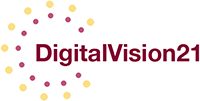Fintechs can excel at innovation given their agility, creativity, and technical prowess. What they lack is the industry knowledge, backend systems and processes, and the banking charter needed to pursue many business lines. Banks, on the other hand, have a long history of providing a broad range of financial services to customers and deep expertise in many areas including working with regulatory agencies. This creates some natural partnership opportunities where banks provide their systems and expertise by offering Banking as a Service (BaaS) to the fintechs. To capitalize on this banks need to shift their mindset from viewing fintechs as competitors to one that views them as valued partners who can help increase their growth.
‘Ambitious Amy’ is one of 19 personas that Wells Fargo developed to help understand the needs of their business customers. A key realization is that whether the customers are business people or retail consumers, figuring out how to best meet their banking needs comes down to developing a better understanding of who they are. They make a point of not thinking in terms of digital services being strictly for business or for consumers because people don’t think that way anymore. “At a very basic level, we look at consumer applications because, at the end of the day, the people who interact with our commercial banking tools are consumers too.”
The Southwest Airlines Christmas fiasco offers lessons for all businesses, including banks. Some of the most relevant of these are:
- Decades of hard-earned brand equity can be destroyed in a day. Even relatively short-lived disruptions in service levels can cause lasting damage.
- It’s important to invest in core technologies. Many companies still rely on 30-year-old core processing and payments systems to run daily operations. Don’t just invest in front-end technologies and ignore the back-end.
- If you don’t live out your values on your hardest day, they’re not really your values. Company values must drive all decisions, in good times and bad.
- Continually develop and test your contingency and business resumption plans. You never know when you might have to use them.
- Create appropriate balances between people, processes, and technology. And if the technology fails be sure the people are prepared to step forward.
Challenger banks have had success with acquiring customers but have not been able to deepen those relationships to the level that will produce the profitability they need. Some are now struggling financially as a result of this. The greatest threat to traditional banks may be successful “community fintechs” which go beyond generic offerings and instead focus on the needs of specific market niches such as young physicians, musicians and other gig workers, or Native Americans. The threat here is not head-on competition but rather new organizations chipping away at a bank’s customer base by meeting the unique needs of certain segments.
We live in a world of rapid changes in technology, customer expectations, and competitive threats. This leads to fundamental questions about how companies can adapt and quickly respond to these challenges. This requires creating an innovation culture: a corporate culture that encourages creative thinking and supports the development and implementation of new ideas. Techniques for doing this include communicating a clear vision of the future, creating an environment that encourages experimentation, fostering employee participation and collaboration, and recognizing and rewarding innovation.
